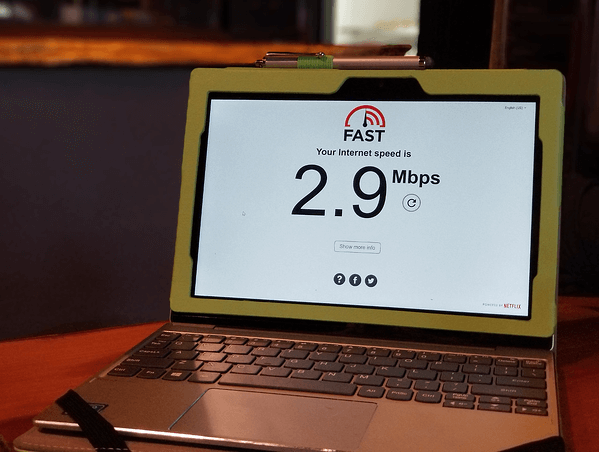I’ve been working remotely from Baltimore for the past five years, all for companies based in the Boston area. I really like it compared to going into an office every day. I have the freedom to work from wherever I want, I can isolate myself and focus better on complex tasks, and I save a bunch of time and money by not commuting. But it’s not without its downsides, ones that I’ve adjusted to in various ways over the years. Tidelift’s setup allows an experienced remote employee like myself a lot of support when it comes to working the way I find most efficient and satisfying, be it from my home office, from an airport or hotel, or from one of my awesome local coffee shops.

Getting things done
Tidelift’s approach to work organization and prioritization fits very closely into the style of kanban (unpointed user stories & WIP limits). We make it a point for everyone in the company to freely talk about what they’re working on with each other and to ask questions, no matter what part of the organization we are in. Some parts of the process are really well suited to remote work:
- #standup, water cooler, and demo Friday: Along with the asynchronous standup and water cooler, which are great for remote employees, each Friday everyone has an opportunity to demo via screen share what they’ve accomplished that week. These demos encompass software features, spreadsheets, lists of stories to work through—whatever you’ve done to help move the Tidelift mission forward. It’s a great way to avoid being siloed in to just your part of the process.
- "Take it to the public chat": When problem solving in a private chat gets too big or complex, the participants have to make a decision: keep it private, or bring it up to a public channel where everyone can participate and learn. This practice makes it easier for problems to get solved and stay solved, since everyone knows what’s up. We also try to make those conversations search-friendly within Slack, so that future us can see if a problem has already been looked at before.
Smile for the camera
Almost all of Tidelift’s meetings are video affairs. Seeing your coworkers’ faces and reactions helps with communication, more so than dealing with just audio or text. Any good laptop nowadays has a decent webcam and audio input. That’s the bare minimum. To be successful when remote, you and your home office will need to be ready for regular video:
- Grooming & clothing: You won’t be able to get away with rolling out of your bed in your PJs and hopping on water cooler. Having to attend daily video chats ensures you’re taking care of yourself enough to shower and get dressed, which is good for self-care.
- Lighting and audio: My desk is in a location where I am very backlit in the early afternoon. During the day I have an LED lamp whose sole job is to illuminate my face. It won’t completely overpower the sun, but it’s noticeable on video when I turn it on. Better curtains for my office are high on my purchase list. Finally, I have an inexpensive-but-good-quality XLR mic plugged into an old mixer which connects to a USB sound card. This delivers much better audio to everyone than from a regular headset mic or Bluetooth headphones.
Fresh air and sunshine
There are times where I want or need to get out of the house to work for a while, either because I have errands to run, or because I’m going insane from being inside with just cats to keep me company.
- Workplace viability: If you have a dedicated coworking space, you’ve already done this. Good for you! If you live the coffee shop life like I do, you’ll have to be a bit more selective. I have several coffee shops in walking distance, and all of them have upsides and downsides. For me, the most important metrics are WiFi strength (remember, video chats), accessibility of power outlets (JavaScript compilation isn’t really easy on a computer) and how much noise there is (noise-cancelling earbuds can only do so much). Quality of food and coffee are important too, but the work still needs to get done.
 |
 |
|
If this is the total bandwidth, maybe I’ll have to come here after water cooler... |
This’ll work pretty well. It’s not my home connection, but it’s good enough to get me out of the house. |
- Social life: I find the more active my social life is outside of work, the less I need to go out to a coffee shop. The point of going to both is the same for me: to see other humans in person. If I don’t, I get antsy, and it affects my work performance and concentration.
- Staying on a single screen: I purposely don’t hook my laptop up to a larger screen at home, or use a different keyboard or mouse. That way, when I’m going to coffee shops, running errands, or travelling, I have the exact same experience everywhere, reducing the need to shift expectations about how I work.
Pro tip: packing list
How many times have you left important things at home—a power cable, headphones, a granola bar for emergencies–when you head out to the coffee shop, coworking space, or even the office (if you go to one)? Leave things at home no longer with a simple packing list!

Attach it to an inside pocket of your bag, and every time you’re going to leave the house, go item by item and ensure you have it before moving on to the next. The one time I skipped doing this recently, I left my noise cancelling headphones at home and had to lose 20 minutes to travel time. Have a packing list!
Going on the road
If you can’t tell, I try to have a big focus on staying social and seeing other humans, and that’s where trips up to the office in Boston or for our quarterly all-hands meetings really help. Nothing beats face-to-face communication—or face-to-face socializing—with the people you spend almost a third of every week with.
- Plan the trip in advance: Having stories and epics planned out in advance with any stakeholders, or having technical debt we want to pay down mapped out, means the only thing I need to worry about when walking into the office on Monday is remembering how my key card works.
- Go up before and take Friday off: I fly in on Sunday, go immediately to the hotel to unpack and unwind, and then chill out in Boston with friends or by myself before I go in on Monday morning. That way I’m not rushing from the airport, nor did I have to wake up at 4 or 5 to get up to Boston on time. I tend to stay in Boston from Monday-Thursday, flying home Thursday evening and taking Friday off.
- It’s not a hackathon: We’re not working 24 hours straight. We’re just working together on an already-planned set of stories for the normal 8-10 hours a day. That way we have time to…
- Socialize: Have a restaurant night. Have a board game night. Have a beer night. Make those moments enjoyable for all that can make it, so they last until the next time we’re all together. And have a “go home early and don’t see your coworkers” night. I need my alone time, too.
If you want to learn more about the awesome culture here at Tidelift, check out some of our other posts:
- Making the most of bringing your distributed team together - How our quarterly meetups work
- Death of a standup - How our asynchronous standups and water cooler work
You can also read the stories about how some of us ended up at Tidelift on our Careers page.


 50 Milk St, 16th Floor, Boston, MA 02109
50 Milk St, 16th Floor, Boston, MA 02109